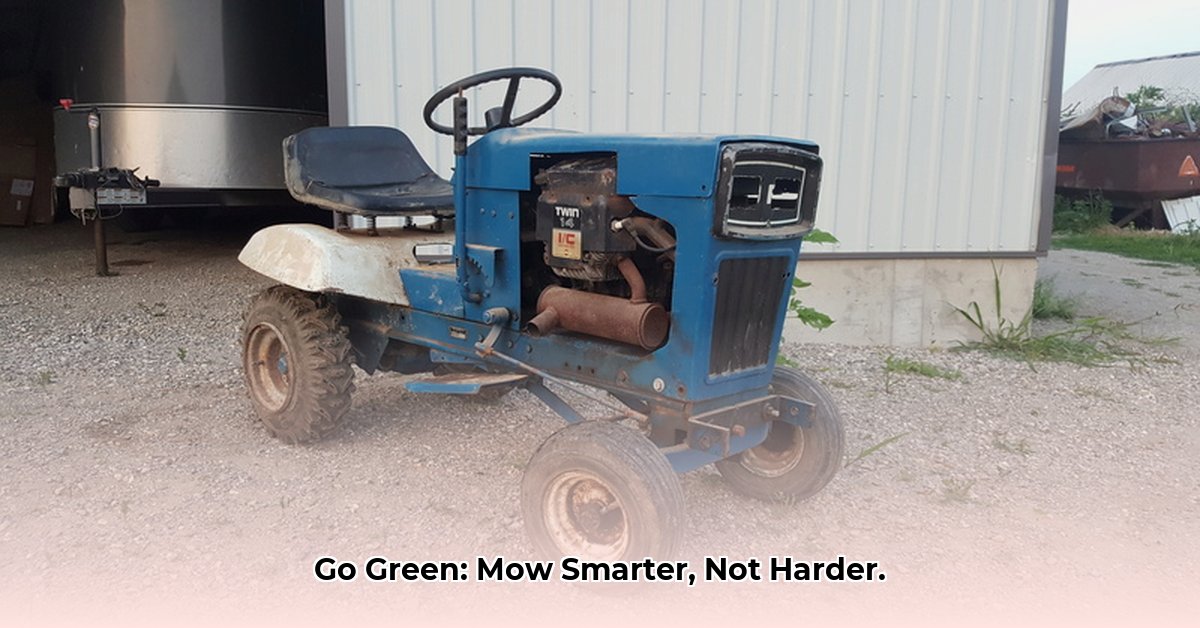
The Ford LT11 tractor, a robust machine from the mid-1980s (1984-1986), embodies a bygone era of lawn care. Its powerful 11-horsepower Briggs & Stratton engine and choice of 5-speed manual or hydrostatic transmission made it a landscaping workhorse. But in today's environmentally conscious world, how sustainable is this classic tractor? This detailed review, combined with an actionable guide, explores its environmental impact and offers greener alternatives for homeowners and professionals alike. For comparison, see this modern tractor review: Modern Tractor Review.
The Ford LT11: A Sustainability Retrospective
Detailed data on the Ford LT11's environmental footprint is surprisingly limited. Precise figures on fuel consumption per acre and greenhouse gas emissions are unavailable, hindering a definitive sustainability assessment. However, we can infer certain aspects. Its gasoline engine undoubtedly produces emissions, contributing to air pollution. Its fuel efficiency remains unknown, leaving a significant gap in our understanding of its total environmental impact. This data deficit underscores a broader issue: the crucial need for transparent lifecycle assessments of all landscaping equipment.
Moving Towards Greener Grass: Modern Alternatives and Their Total Cost of Ownership
The lack of comprehensive data on the LT11's environmental impact makes exploring modern alternatives essential. Electric and battery-powered mowers present a compelling option, boasting zero tailpipe emissions and quieter operation. However, their higher initial purchase price and limited battery life are drawbacks.
Another significant factor is the Total Cost of Ownership (TCO). While electric mowers have lower running costs (electricity vs. gasoline), the initial investment and eventual battery replacement need careful consideration. A comparative analysis of electricity prices versus gasoline costs, along with maintenance expenses, is crucial for informed decision-making. Robotic lawnmowers offer further convenience, but their electricity consumption and the embedded carbon in their manufacture need to be considered in the TCO calculation.
Sustainable Lawn Care: Best Practices Beyond Equipment Choice
Sustainable lawn care extends beyond equipment selection. Adopting responsible practices significantly reduces environmental impact. Consider these key strategies:
Mulching: Leaving grass clippings on the lawn provides natural fertilizer, reducing or eliminating the need for chemical fertilizers. This practice drastically cuts down on the environmental impact of chemical production and transportation.
Efficient Watering: Deep, infrequent watering encourages deeper root growth, resulting in drought-resistant grass and reduced water waste. This conserves a precious natural resource.
Sharp Blades: A sharp blade ensures clean cuts, promoting healthier grass and reducing the need for frequent mowing. This minimizes both fuel consumption and the stress on your lawn.
Waste Management: Recycle or compost yard waste, avoiding landfill contributions and promoting a circular economy.
Natural Alternatives: Choose natural weed control and fertilizers, protecting water sources and beneficial insects.
Advocacy: Support policies promoting environmentally friendly lawn care practices.
Comparative Analysis of Lawn Care Equipment
The following table compares various lawn care equipment types, highlighting their respective fuel efficiency, emissions, and lifecycle costs. Note that these are estimates; precise figures require extensive studies and vary greatly based on factors like engine size and usage.
| Equipment Type | Fuel Efficiency (Approx. Gallons/Acre) | Emissions (Approx. CO2 g/kWh) | Lifecycle Cost (Estimate) | Noise Level | Maintenance |
|---|---|---|---|---|---|
| Ford LT11 Tractor | N/A (Requires further research) | High (Requires further research) | High | High | Moderate |
| Gas-Powered Mower | 0.5-1.0 | High | Moderate | Moderate | Moderate |
| Electric Mower | N/A (Electricity Consumption Varies) | Very Low | Moderate to High | Low | Low |
| Robotic Mower | N/A (Electricity Consumption Varies) | Very Low | High | Low | Low to Moderate |
Calculating the Ford LT11's Environmental Impact: A Simplified Approach
Accurately calculating the environmental impact of using a vintage Ford LT11 is challenging due to limited data. However, a simplified analysis focusing on key factors can provide a reasonable estimate. This involves estimating fuel consumption, calculating resulting greenhouse gas emissions, assessing maintenance impacts (including the environmental cost of replacement parts), and accounting for end-of-life disposal or recycling. Further research into the specific fuel type used and its corresponding emission factor is crucial for accurate calculation.
Conclusion: Sustainable Choices for a Greener Future
The lack of readily available data underscores the urgent need for transparent lifecycle assessments of all landscaping equipment. While the Ford LT11 might have been highly reliable, choosing modern, eco-friendly alternatives—such as electric or robotic mowers—along with adopting sustainable lawn care practices, offers a more environmentally responsible approach. This shift isn't merely beneficial for the planet; it can represent a substantial long-term investment in your budget. The future of lawn care lies in greener, quieter, and more efficient technology and practices.